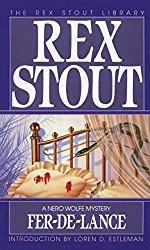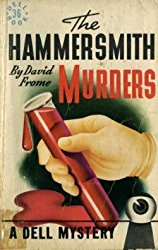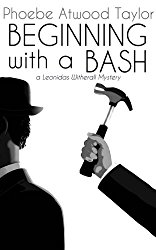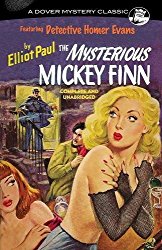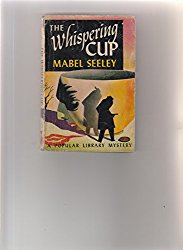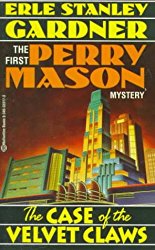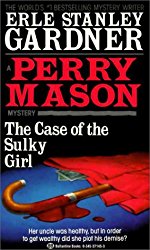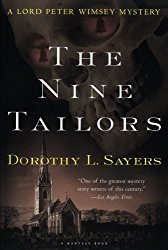The "Moderns": America: 1930
Howard Haycraft says, "Rex Stout brought to the detective story not only its keenest wit, but also exceptional literary talent.... [Stout's] plot, detection, and narration are of the highest order" (Murder for Pleasure).
|
Rex Stout (b. 1886- ):
|
Click Image to Click the image below to |
|
Click Image to Click the image below to |
Mrs. Zenith (Jones) Brown (b. 1898- ) wrote as "David Frome" and as "Leslie Ford."
|
"Alice Tilton" wrote Leonidas Witherall novels and Bill Shakespeare novels.
Elliot Paul (b. 1891- )wrote Homer Evans murder stories.
|
Phoebe Atwood Taylor (b. 1909- )may be "Alice Tilton," mentioned above. She wrote about Asey Mayo, "the shrewd Cape Codder":
|
Click Image to Click the image below to |
|
Click Image to Click the image below to |
Elliot Paul wrote The Mysterious Mickey Finn (1939). Frances and Richard Lockridge wrote tales of the husband-and-wife detective team of Mr. and Mrs. North. They also wrote about Lieutenant Wiegand. Timothy Fuller wrote about Jupiter Jones. |
Elizabeth Dean created the Emma Marsh adventures. She also wrote Hank Fairbanks adventures. Haycraft writes, "Mixing murder and merriment is a much more serious business than it might seem" and "Members of the Hammett group are more likely to rely on the humor of dialogue: the justly famous American wise crack" (Murder for Pleasure).
Jonathan Latimer wrote about Bill Crane.
A.A. Fair wrote about Bertha Cool and Donald Lam. (It's interesting to note that the reviewers and critics of the time were speculating that A.A. Fair was a pseudonym for Erle Stanley Gardner, who was known for the Perry Mason books. At the time, Gardner didn't confess that this was, indeed, his pseudonym, but history has proven the critics and reviewers correct in their surmise.)
Frank Gruber wrote about Johnny Fletcher and Simon Lash.
Daniel Mainwaring (1902), as "Geoffrey Homes," wrote about Robin Bishop and Humphrey Campbell.
Rudolf Kagey (1904- ), as "Kurt Steel" wrote about Hank Hyer. Anthony Boucher writes that Kurt Steel's Judas Incorporated is a pro-union labor novel.... ("The Ethics of the Mystery Novel").
Cleve F. Adamswrote about Rex McBridge; William DuBois created Jack Jordan;George Harmon Coxe (b. 1901- ) wrote about Kent Murdock; andBrett Halliday created Michael Shayne.
Raoul Whitfield,Whitman Chambers (b. 1896- ), andRaymond Chandlerwrote "tough-guy novels." Chandler developed Philip Marlowe and later became president of the Mystery Writers of America. Chandler wrote "...to get murder away from the upper classes, the week-end house party and the vicar's rose-garden, and back to the people who are really good at it" (Raymond Chandler,The Art of Murder).
Howard Haycraft writes, "English women detective story writers have been found, from the beginning, in the vanguard of the most inventive and imaginative minds practising the form. Their American sisters, on the other hand, with relatively few exceptions, have stuck stubbornly and on the whole rather dully to the stereotyped formula of romanticized mystery-detection established by Mary Roberts Rinehart in the early 1900's" (Murder for Pleasure). Haycraft calls everyone listed from Eberhart to Field below "the 'better element' in the school" (p. 216:
- Mignon G. Eberhart (b. 1899- ) wrote about Nurse Sarah Keate, Susan Dare, and Lance O'Leary.
- "Leslie Ford" (alter ego "David Frome") wrote Colonel Primrose novels and Grace Latham novels, although Haycraft writes that the Primrose and Latham novels "can scarcely rival 'Frome's' Pinkerton tales."
- Dorothy Cameron Disney -- "an open and avowed Rinehart disciple" -- wrote Death in the Back Seat (1936).
Charlotte Murray Russellwrote about Jane Amanda Edwards.
Other names that Haycraft mentions include:
- Constance and Gwenyth Little
- Anita Blackmon (b. 1893- )
- Margaret N. Armstrong (p. 1867- )
- Clarissa Fairchild Cushman
- Medora Field (b. 1898- )
|
Mabel (Hodnefield) Seeley gets special mention from Haycraft, who says her work resembles that of Hitchcock's in many ways:
|
Click Image to Click the image below to |
Erle Stanley Gardner (b. 1889- ) was "King of the 'time-killers' among American writers today" (Howard Haycraft, Murder for Pleasure). (Remember that Haycraft was wrote this in the 1940s.) He wrote about lawyer Perry Mason and about Douglas Selby. Haycraft writes about Gardner, "With no pretentions to literary style, but with a solid understanding of 'action' fiction" (Murder for Pleasure):
- The Case of the Velvet Claws (1933)
- The Case of the Sulky Girl (1933)
|
Click Image to Click the image below to |
Click Image to Click the image below to |
Rufus King (b. 1893- )wrote about Lieutenant Valcour.
Richard W. Webb and Hugh C. Wheeler collaborate under three pseudonyms: "Q. Patrick," "Patrick Quentin," and "Jonathan Stagge." Haycraft believes that "Quentin" equates to their best work:
- A Puzzle for Fools (1936)
- A Puzzle for Players (1938)
Stuart Palmer created Hildegard Withers and Oscar Piper.
William Anthony Parker White (b. 1911)wrote as "Anthony Boucher" and as "H.H. Holmes."
Helen Reilly (sister of John Kieran) wrote about Inspector McKee. Haycraft says she is "among the most convincing that have been composed on the premise of actual police procedure" (Murder for Pleasure).
Phoebe Atwood Taylor (b. 1909- ) wrote about her Cape Cod detective Asey Mayo.
Elizabeth Daly wrote about Gamadge.
Helen McCloy wrote about "her credible psychiatrist" Basil Willing.
Haycraft categorizes other writers who display a use of esoteric knowledge a la Sayers and Van Dine and/or a specialized background. He writes, "The specialized background...is at its best when crime and solution can be conclusively correlated with it (the perfect example, of course, is Dorothy Sayers' The Nine Tailors)" (Murder for Pleasure). These writers include:
- Clayton Rawson, who wrote about Merlini (Magic).
- James William MacQueen, writing as "James G. Edwards," wrote about Inspector Bondurant (Medical).
- Harry Kurnitz, as "Marco Page," exposed the rare book market. His Fast Company (1938) won the Dodd, Mead "Red Badge" award
Judson Phillips. - "Hugh Pentecost," in Cancelled in Red (1939), exposed the philatelic racket and won the Dodd, Mead "Red Badge" award. According to Anthony Boucher's essay "The Ethics of the Mystery Novel," Hugh Pentecost's The Brass Chills presents a Communist who is intelligent and a man of good will.
- Cortland Fitzsimmons wrote about sporting specialties ("when he is not writing about Ethel Thomas").
- Percival Wilde (b. 1887- ) wrote Bill Parmelee stories (about card sharping).
- "Sue MacVeigh," "whose husband Andy combines detection with railway engineering" (Murder for Pleasure).
- Theadora DuBlois wrote stories about Jeffrey and Anne McNeill (medically authentic).
|
Click Image to Click the image below to |
Van Wyck Mason (b. 1877- ) wrote about Captain Hugh North. He also writes as "Geoffrey Coffin." J.P. Marquand (b. 1893- ) wrote about Mr. Moto. (Peter Lorre starred as Moto in eight films.) Alexander Laing (b. 1903- ) wrote Dr. Scarlett tales. James Warner Bellah (b. 1899- ) |
"Unclassifiables" who have influenced the detective story include:
- Cora Jarrett
- Elisabeth Sanxay Holding (b. 1889- )
- Dorothy Hughes (b. 1904- )
- William Sloane
- Harrison R. Steeves (b. 1881)
- Percival Wilde
- Cornell Woolrich
- David Keith
Amazon and the Amazon logo are trademarks of Amazon.com, Inc. or its affiliates.
(This is a link through which I make a small commission if you buy. See here for more details.)
